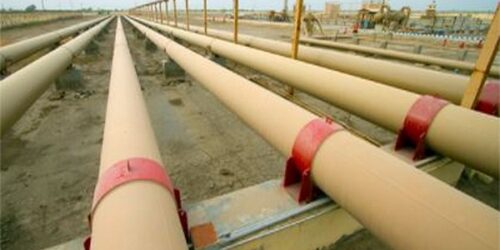Oil and gas investment declined in 2020 and 2021 because of the pandemic, which is a “recipe for more volatility,” Joseph McMonigle, secretary-general for the International Energy Forum, said on a panel at the World Petroleum Congress.
“Capex cuts by international oil companies and national oil companies in 2020 was about 35%,” he said. “We’re now showing another 23% reduction in capex levels” from pre-pandemic levels this year.
In 2019, E&P companies spent $525 billion, an amount which plummeted to $341 billion in 2021, he added.
“We have to get back to $525 billion over several years until 2030 to restore market balance,” McMonigle said. “I’m afraid what we’re seeing with the energy crisis is on our doorstep.”
According to a report released Dec. 7 by the IEF and IHS Markit, the “next two years will be critical for sanctioning and allocating capital toward new projects to ensure adequate oil and gas supply comes online within the next 5-6 years.”
Prices at the pump have affected US consumers, and winter heating oil prices have jumped to the point where the Biden administration said it will release about 50 million barrels of crude from the Strategic Petroleum Reserve early in 2022, aiming to offer price relief.
Oil, gas ‘part of the solution’
Investment in energy supply represents the “greatest challenge the oil and gas industry faces today,” Hess Corp. CEO John Hess told the panel. “We’re way short of where we need to be.”
The CEO noted, as did many other speakers at the conference, that even though research and development is soaring in alternative energies and technologies aimed at diversifying and at some point largely eliminating fossil fuels, oil and gas will remain at the center of energy use for the next few decades.
“At the end of the day, to have an orderly transition, oil and gas are part of the solution, not the problem,” he said. “Our carbon footprint is 10% less now than 10 years ago. The real takeaway is that the energy transition will take a long time, cost a lot of money, and need technologies that don’t exist. We need climate literacy, energy literacy and economic literacy.”
The US produced shale oil quickly starting around 10 years ago, helping US oil production to more than double. The rapid growth in part caused oil prices to crash in late 2014, with volatility plaguing the sector in the intervening years.
“We grew it at a rate too fast … but shale has gone from a growth to a harvest industry,” John Hess said. “Investors are [demanding] more financial discipline.”
Like many companies, Hess has taken that advice and believes about 70% reinvestment of cash flows into company operations, with the rest returned to shareholders, is a prudent recipe for E&P company operations.
Moreover, many even in the industry don’t realize that some large shale oil reservoirs have peaked. The Bakken Shale of North Dakota/Montana and the Eagle Ford Shale of South Texas are largely stagnant production-wise, he noted.
“So, it leaves the Permian Basin that, obviously, has a bigger resource, to be the growth engine for the country,” Hess said.
Gulf of Mexico investment lagged while oil prices were low because the region is long-cycle, meaning payback may take years, as opposed the shale where the first barrel of oil may start producing revenue within six to 12 months.
The US Gulf is also one of the world’s lowest-cost, lowest carbon-footprint basins and delivers higher returns than many others, Hess said, while Mexico, Angola and the North Sea are all in decline.
“We have to make sure we have the ability for [delivering] production at a time when clean energy is being urged” to ramp up, he said.






